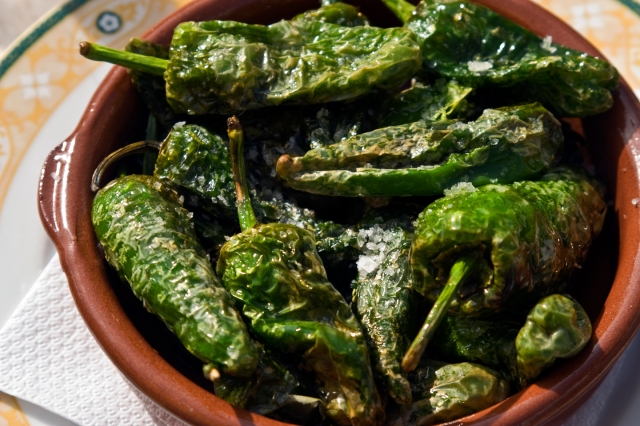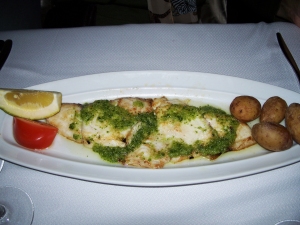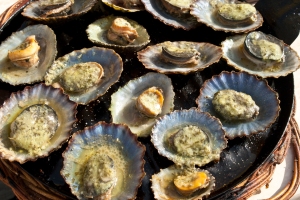Padrones are especially popular in the Canary Islands, where a traditional meal begins with a dish of these and a dish of papas arrugadas, small potatoes boiled in saltwater. These potatoes are served with two bowls of mojo, which are much more up-front about their burn factor. The green one is mild and made of fresh cilantro; the red one is made with red peppers and is picante – hot — in varying degrees. But rarely as hot as the rogue padrones.
Apart from the padrones, the food you’ll find in Spain’s Canary Islands is pretty straightforward. It’s rarely pretentious or fussily presented, the empassis is on flavor and fresh ingredients. The seven islands in the archipelago share a common food heritage, and you can sample it best at small local restaurants, especially on Tenerife.
Ironically, it is on Tenerife, the most touristed and cosmopolitan of the islands, that you will find the most restaurants proudly serving traditional Canarian cuisine. The reason has much to do with current food trends. While other islands are still trying to make travelers feel comfortable with foods of their homelands, Tenerife has come to realize that today’s traveler wants to sample local cuisines. The number of places advertising typical Canarian foods shows this new awareness of local food traditions.
Chefs on Tenerife have long appreciated the ingredients produced by local farms, dairies and vineyards. They may not yet use the word ‘localvore’ to describe it, but, the concept of using local products in traditional ways was popular here long before it became fashionable.
That’s not to say that Tenerife doesn’t offer a full range of “exotic” dining, from Italian to German to Peruvian to Irish pub food. The array of international styles found at resort restaurants is astonishing, but it would be a shame not to sample all the local specialties in a typical Canarian restaurant.
Fresh fish is almost always on the menu – after all, the islands sit in the Atlantic Ocean – and may be a bewildering assortment whose names are untranslatable. If in doubt, ask to see the fish. These are most often served fried or grilled, and in general, local chefs are at their very best with grilled white fish, which is cooked to juicy perfection. Another favorite is shrimp sizzling in olive oil and garlic, served in a terra-cotta tapas dish. However they are prepared — in a lightly spiced sauce, fried in a light batter or in creamy rice dishes — the shrimp are excellent, as are steamed or roasted mussels. Limpets are especially delicious, lightly sauced with herbs and garlic and roasted on their shells.In addition to the fresh seafood, pork and chicken are always offered, and rabbit and goat are also common in traditional restaurants. Meats are usually served as chops or cutlets, and in various savory stews.
Soups and stews are the most typical Canarian meals. Potaje has only vegetables; rancho canario has meat, and puchero has even more meat. A staple food of the Guanches – the island residents before the Spanish conquest – is gofio, a mixed grain once eaten as bread, and still used to thicken stews. Another common stew is garbanzo compuesto (chick-pea stew with meat), often available as a first course.
Except in Santa Cruz, most restaurants serve both full meals and light lunches – you can get a hearty meal at midday or in the evening, and can also get a sandwich, salad or light meal of tapas (often called “entradas” here) for lunch.
Canarians are casual about what you are expected to order at any time of day, happily serving several appetizers or tapas in place of a main course in the evening. More formal resort restaurants tend to be less flexible, but small independent restaurants still think customers should be able to eat what they want, when they want it.



